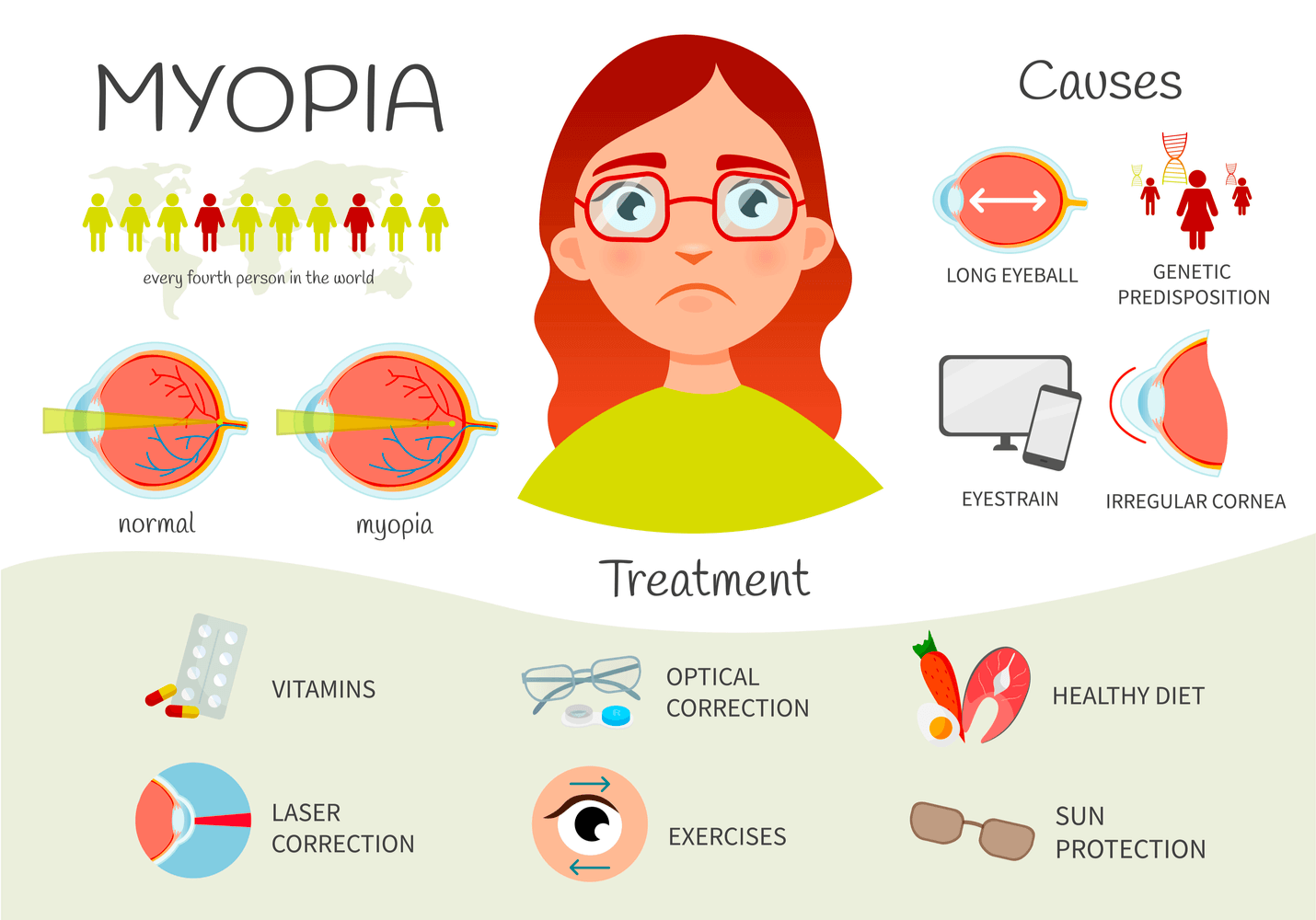
Introduction
Although several factors influence young people’s eating behavior and food choices, two powerful forces are television (TV) viewing and exposure to TV food advertising. In the United States, children and teenagers watch nearly four and a half hours of television a day. During this period, children between the ages of 2 and 12 can receive up to 38 minutes of advertising per day. Food advertising accounts for half of the time spent on children’s television. Children aged 2 to 7 can see 12 food advertisements, and children aged 8 to 12 see 21 food advertisements per day, or 7,609 advertisements per year. While some data suggest that food advertising for young children has declined since its peak in 2004, the number and type of food advertised remains troubling.
The main determinant of food preference is taste. Eating habits and taste preferences develop early in life and remain relatively stable in adulthood. Because taste preferences are acquired through the learning process, including repeated exposure to and learning about the positive news of various foods, exposure to television viewing in the early stages of life can mark lifelong influences on eating habits.
Disciplines
Food and beverage marketing and children’s eating behavior
Food and beverage marketing is a major factor in influencing children’s food preferences and purchasing requirements. Marketers use many ways to reach children through their messages, such as using popular cartoon characters and toy giveaways to increase the entanglement of young people. Billboards, school ads, TV ads, TV programmmovievideo games and product placement in grocery stores, internet sites and games, and smart phone apps are often used to deliver information and attract young people. Although technology and advertising technology are changing, television remains the primary means of marketing food and drink to young people, especially in early childhood. Each year, the food and beverage industry spends $1.23 billion on marketing food and beverages to children under the age of 12.
Exposure to unhealthy TV food marketing
American children don’t eat enough nutritionally dense foods (i.e. fruits, vegetables, low-fat dairy products and whole grains) and have high energy density foods and beverages (i.e. potato chips, fast food, Soda) . Children are exposed to more marketing information about unhealthy foods, such as sugary breakfast cereals, fast food restaurants and snacks, such as chips, desserts, sweets, sugary drinks and yogurt, than any other foodbeverage. Exposure to unhealthy foods through television marketing is associated with an increased preference for marketing foods. Since most children’s food preferences are formed in early childhood, children are likely to develop lifelong preferences for foods with calories, fat and added sugars, and therefore, the risk of obesity is also increased due to TV food marketing practices.
Research background
The influence of TV watching and advertising on children’s eating behavior
Since a third of American children and adolescents are overweight or obese, it is important to study the extent to which television viewing and television food advertising negatively impact current and future dietary behaviour of children and adolescents. It was also important to discuss potential regulations that could protect children from television advertising and deceptive marketing. Finally, given the ubiquity of television advertising, the implications for policy, parents and service providers will be discussed.
Major research issues
Is there a link between TV viewing and advertising and eating behavior?
- Is there any difference in the exposure of different ethnic groups in TV advertisements?
- Are TV viewing and TV food advertising associated with diet-related health problems, such as childhood obesity?
- Are television advertising policies and recent industry self-regulation effective in influencing children’s eating behavior?
The latest research
The relationship between TV watching/advertising and children’s eating behavior
It has been documented that among young children, TV viewing was significantly associated with an increase in unhealthy food, including fast food, consumption of foods seen on TV increased requests, and a more positive attitude towards unhealthy foods. The IOM committee conducted a systematic review of scientific evidence and concluded that television advertising affects food preferences, purchasing requirements and diet, at least for children under 12 years of age. This evidence is more evident in the younger age group, where more studies have been conducted on younger children than on adolescents.
A recent cross sectional study of young children showed that exposure to food advertising was associated with increased consumption of advertising brands, high energy foods, soda and fast food, but overall food consumption was only associated with television viewing, and some of the advertising in the study was exposed. Few prospective studies supported the negative effects of television viewing on eating behavior; 11-year-old children’s television viewing increased by 167 kcal/day per hour. The only study of older teenagers found that those who watched more TV in high school had fewer healthy eating habits during the transition to adolescence.
Several experimental studies have demonstrated the impact of TV food advertising on increased food intake. In a recent experiment, primary school age children who saw ads for unhealthy foods while watching a children’s cartoon program consumed 45 percent more snacks than those who watched the program using non food ads. In contrast, children’s attitudes and beliefs about healthy foods were positively influenced by healthy food advertising, but these were reduced when unhealthy food advertising was displayed with healthy food.
Ethnic minorities have access to television viewing and advertising
Recent findings indicate that food marketing among ethnic minority groups has increased over the past decade. There are racial differences in media use, with the greatest difference in television time. However, there is still little research on TV viewing and food advertising practice for ethnic minority groups. A handful of existing studies have shown that black children see more food advertising than fast food restaurants, or that they have higher sugar content than white children. Hispanic preschoolers see nearly 300 fast food ads a year on the Spanish language channel alone. The findings are particularly worrisome given the high rates of overweight and obesity among minority children and the higher consumption of sugary drinks among african-american and hispanic-year-olds than among white children.
TV commercials and obesity
While there is ample scientific evidence linking TV viewing duration to childhood obesity and television viewing behavior and future obesity, few studies have shown a direct link between exposure to television advertising and obesity. The study also found a link between fast food advertising and body mass index, suggesting that banning fast food advertising could cut the number of overweight children between the ages of 3 and 11 by 18 per cent. In view of the challenges involved in direct assessment of the impact of advertising on obesity, strategic research has been undertaken. According to these studies, without television advertising, overweight and obesity rates among children aged 6 to 12 would be reduced by about 25 per cent and 40 per cent, respectively.
The role of the family in access to television viewing and advertising
Family Communication and media education play an important role in mediating the negative influence of advertising on children’s eating behavior. Despite the limited research available in this area, the findings suggest that parents’communication about advertising and the development of rules for food consumption has been more successful in reducing energy-intensive food consumption among children than in public discussions among consumers. However, restrictions on parents’advertising exposure to preschoolers and early primary school children are more effective than restrictions on older children.
The policy of restricting the advertisement of TV food
The United States has a number of regulations on children’s television advertising for food and drink, including a self-regulatory policy for the industry. However, federal agencies have limited capacity to regulate unfair and deceptive advertising practices targeting children. In 2006, in partnership with the Better Business Bureau’s Children’s Food and drink advertising initiative (CFBAI) , a coalition of food companies committed to improving the nutritional quality of foods marketed to children under the age of 12. In addition, the IOM committee made 10 recommendations to address the food industry and public sector activities to provide healthy diets for children and adolescents. Comments assessing the progress made by industry stakeholders in marketing healthy foods to children show that food and beverage companies have made some progress in promoting healthier products, but restaurants, industry associations and the media have made limited progress. Despite reported progress, overall television food advertising for young children increased by 9 per cent between 2008 and 2010. In addition, more than a quarter of children’s food/drink advertising came from non-affiliated companies, including most fast food outlets.
Research Gap
While progress has been made in assessing the exposure and content of television advertising among children and adolescents, more research is needed to clarify the mechanisms involved in television advertising exposure and children’s dietary choices. In addition, the impact of health food/beverage advertising on the consumption of these foods remains a gap in research. One benefit of policy initiatives is to understand whether increased exposure to healthy food advertising leads to children’s consumption and preference for healthy foods and beverages. The family provides a strategic strategic framework for behavior and enforcement of rules and restrictions, especially during the formative years. Therefore, more research is needed to reveal the impact of parental communication style on children’s food choices relative to consumer-related issues. There is also a need to raise awareness of marketing practices in the food industry for parents. The effectiveness of the food industry’s self-regulatory initiatives has yet to be determined, and further research is therefore critical to evaluating the advertising activities of participating companies.
Conclusion
Children and teenagers spend a lot of time watching TV. As a result, young people are exposed to a lot of food and drink advertising every day. In minority groups, the risk is even higher. Television viewing is associated with unhealthy food consumption among children. There is ample evidence that television advertising influences food preferences, purchasing requirements and diet for children under the age of 12. Experimental studies support the causal relationship between food advertising and children’s eating behavior, demonstrating that after food advertising, young children are more likely to increase their calorie intake and snacks. Although research on parental communication in food advertising is limited, it has been shown that parental communication about food advertising and restrictions on advertising exposure can prevent energy intensive food consumption by young children. The findings so far do not establish a causal relationship between television advertising exposure and obesity, but do find a significant association between fast food advertising and children’s body mass index. There are limited marketing regulations for children in the United States, and a series of legal and self-regulatory rules have been established in various European countries. However, a significant association was found between fast food advertising and children’s body mass index. There are limited marketing regulations for children in the United States, and a series of legal and self-regulatory rules have been established in various European countries. However, a significant association was found between fast food advertising and children’s body mass index. There are limited marketing regulations for children in the United States, and a series of legal and self-regulatory rules have been established in various European countries. Although Canada has a well-established system of self-regulation, Quebec is the only province to ban commercial advertising for children under 13
Impact on parents, services and policies
Despite the positive steps taken by the industry to promote a healthy lifestyle for children, the company has failed to protect children and adolescents from promoting unhealthy products, that’s because nearly 69 percent of all advertising by the companies that participate in the alliance is poor in nutritional quality. Self regulation in the foodbeverage industry addresses the health needs of children aged 12 and younger, giving large numbers of young people greater purchasing power and more autonomy in making food choices. Nutrition and marketing standards policies should be implemented and implemented by federal, state and local governments to achieve uniform protection of diet and health of children and young people.
According to the American Academy of Pediatrics, children under 2 should not watch television, and those over 2 can only watch one to two hours of quality programming a day. Health-care providers should be aware of the latest research and policies on television viewing and children’s dietary behaviour and obesity. During child visits, health-care practitioners should discuss their television habits with family members and inform them of the negative impact of food advertising on children’s eating behaviour.
Families play an important role in the lives of young children. They rely on their nutrition, role building and the rules of TV viewing and advertising exposure. Parents must be aware of the amount of advertising their child receives and its impact on food preferences. Parents should also be aware of the importance of not watching TV at mealtimes, taking it out of the children’s bedroom, and generally limiting their children’s access to it. One of the recommendations made by IOM related to a partnership between the government and the private sector to implement social marketing efforts aimed at educating and helping parents to build skills to choose and prepare healthy food and beverages for their children. Teaching parents to communicate about consumer issues and media literacy may also help their children make more informed dietary choices.














